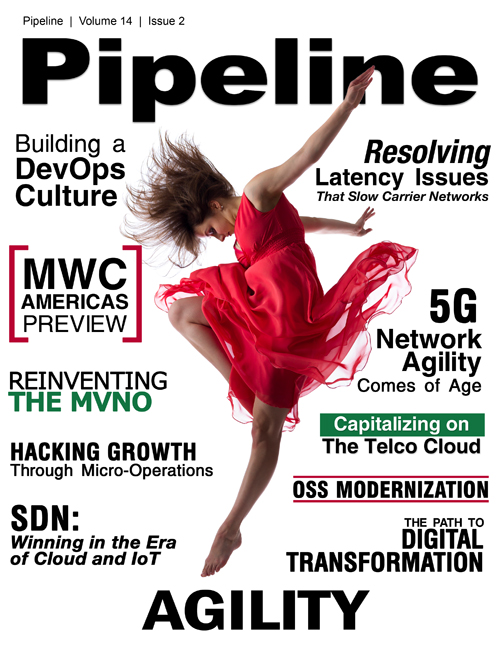Achieving Digital Growth Hacking Through Micro-Operations
By: Bob Barrows
 Digital Transformation. Digital Service Provider. Agile Monetization. Business Agility. DevOps. Microservices. Automation. These are words that represent many
great approaches and that propose a superior end state for communications service providers (CSPs) striving to be digital service providers capable of operational agility and bolstered by
successful digital transformation. The above concepts and approaches are the lead-ins for the many products and services that will get CSPs to where they want to be in terms of digital services.
Digital Transformation. Digital Service Provider. Agile Monetization. Business Agility. DevOps. Microservices. Automation. These are words that represent many
great approaches and that propose a superior end state for communications service providers (CSPs) striving to be digital service providers capable of operational agility and bolstered by
successful digital transformation. The above concepts and approaches are the lead-ins for the many products and services that will get CSPs to where they want to be in terms of digital services.
But there are heavy risks of proceeding with one or more of these approaches if a CSP has not properly assessed and planned for how operations will handle entirely new business models — models that will bring drastic changes during and after they have been implemented. The allure of having an expanded product catalog robust with a wealth of new digital revenues, not to mention the possibility for substantial operational cost aversion, should only be considered once a newly designed agile organization is actually implemented.
We have all seen many transformation projects fail to reach their destinations because some new technology, approach, or strategy variation, as well as organizational gap, forced either a recalculation of direction or of destination. Many CSPs that have missed the operational redesign step have set sail only to never be heard from again.
One of the best investments any CSP planning to digitally transform can make is to place the entire organization in front of the mirror in order to truly assess how internal teams are functioning. Are they functioning as mini-businesses as opposed to functional parts? If they are not able to constantly evaluate and adapt in agile fashion, supporting bottom-up, top-down and other customer-inspired directional changes, then implementing a transformation — let alone becoming a completely new digital company — will result in continued operational inefficiencies. That means coming in second-place.
The better approach is to change the business organizational design into a "growth-hacking machine," the process of rapid experimentation across product development that enables organizations to arrive at their intended destinations and to create urgently needed outcomes.
What is a truly agile and growth-supporting organization and how can leadership prepare, mitigate, and build in measures to handle such changes and adapt to an unknown future?
A new approach for successfully achieving true operational agility for digital companies is to change to micro-operations: a culmination of the latest digital tactics that recreates the entire business operation so that the business processes operate as one harmonious machine, with many micro-operational groups operating autonomously. Each group runs as a unique business process and communicates through predefined agile mechanisms to serve specific business goals.





















